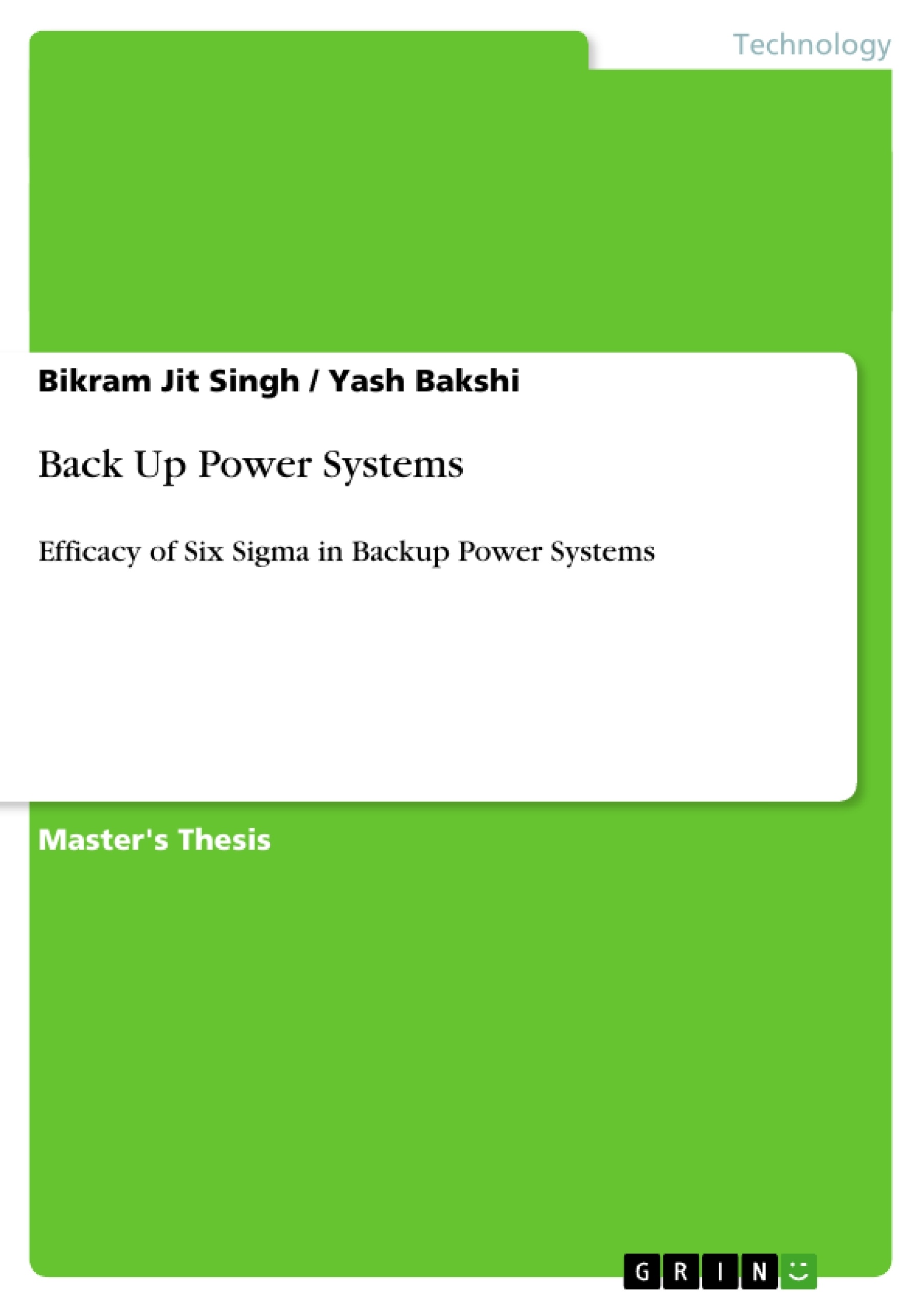Importance of BPS can’t be ignored particularly in developing countries but feeble effort was seen to improve its power generation cost. An imprecise and outdated frameworks used for bringing change in BPS sector are unable to increase its overall equipment efficiency. The much diversified methodology of Six Sigma has been implemented through a case study which further validates the methodology adopted to tackle the problem formulated, in book ahead. Results achieved during the case, highlights the economical production of backup power by optimizing concerned power-generation parameters of a Cummin’s Diesel Genset through strategic application of Six Sigma’s DMAIC approach.
The book outlines the need for proper energy reform in backup power industry. The DMAIC approach of Six Sigma in BPS sector is too infrequent and next, motivates to reduce backup power cost and its associated expenditures, which are generally ignored.
Inhaltsverzeichnis (Table of Contents)
- Preface
- Chapter-1: Introduction to Power Backup Systems
- 1.1: Introduction
- 1.2: Power Backup Systems
- 1.3: Need for Backup Power Systems
- 1.4: Types of Backup Power Systems
- 1.5: Applications of Backup Power Systems
- 1.6: Importance of Backup Power Systems in India
- Chapter-2: Current Scenario of Backup Power Systems
- 2.1: Introduction
- 2.2: Power Crisis in India
- 2.3: Demand of Backup Power Systems
- 2.4: Issues Related to Backup Power Systems
- 2.5: High Cost of Backup Power Systems
- 2.6: Need for Parametric Optimization
- Chapter-3: Literature Review
- 3.1: Introduction
- 3.2: Dependency of Every Sector on BPS
- 3.3: Present and Future Challenges in BPS Sector
- 3.4: Improvement Initiatives for BPS Efficiency
- 3.5: Rare Application of Six Sigma in BPS Sector
- Chapter-4: Six Sigma Methodology for BPS Optimization
- 4.1: Introduction
- 4.2: DMAIC Model of Six Sigma
- 4.3: Define Phase
- 4.4: Measure Phase
- 4.5: Analyze Phase
- 4.6: Improve Phase
- 4.7: Control Phase
- Chapter-5: Case Study: Optimization of Diesel Genset
- 5.1: Introduction
- 5.2: Problem Formulation
- 5.3: Data Collection and Analysis
- 5.4: Implementation of DMAIC Model
- 5.5: Results and Discussion
Zielsetzung und Themenschwerpunkte (Objectives and Key Themes)
The book aims to showcase the efficacy of Six Sigma in optimizing backup power systems, particularly focusing on diesel generators used for power generation in India. The study delves into the current power crisis and the growing demand for backup power systems, highlighting the high costs associated with these systems. The text utilizes a case study to demonstrate how Six Sigma methodology can be applied to optimize the mileage of a diesel generator, thereby reducing operational costs. Key themes explored in the book include:- The critical role of backup power systems in modern society, particularly in developing countries facing power shortages.
- The need for cost-effective solutions to address the high operational expenses of backup power systems.
- The potential of Six Sigma methodology as a powerful tool for optimizing the efficiency of backup power systems.
- A comprehensive exploration of the Define-Measure-Analyse-Improve-Control (DMAIC) model of Six Sigma and its application in the context of backup power systems.
- A practical case study that showcases the real-world implementation and successful results of the Six Sigma approach for optimizing diesel generator mileage.
Zusammenfassung der Kapitel (Chapter Summaries)
- Chapter-1: This chapter provides a comprehensive introduction to power backup systems, exploring their importance, types, applications, and the specific need for these systems in India's context.
- Chapter-2: This chapter examines the current scenario of backup power systems in India, focusing on the power crisis, the growing demand for these systems, and the challenges associated with their high costs.
- Chapter-3: This chapter delves into the literature review, highlighting the dependency of various sectors on backup power systems and the need for improvement initiatives to enhance their efficiency. The chapter also points out the rarity of Six Sigma applications in the backup power system sector.
- Chapter-4: This chapter introduces the Six Sigma methodology and its DMAIC model, which is proposed as a framework for bringing about a breakthrough in the efficiency of diesel generators. It provides a detailed overview of each phase within the DMAIC model.
- Chapter-5: This chapter presents a case study focusing on the optimization of a diesel generator. It outlines the problem, data collection and analysis methods, the implementation of the DMAIC model, and the results obtained.
Schlüsselwörter (Keywords)
The book primarily focuses on backup power systems (BPS), power crisis, diesel generators, Six Sigma methodology, DMAIC model, energy conservation, cost optimization, and efficiency improvement. The text examines the application of Six Sigma as a powerful tool for optimizing the performance and reducing the operational cost of backup power systems, particularly diesel generators, in the context of India's energy sector.- Arbeit zitieren
- Bikram Jit Singh (Autor:in), Yash Bakshi (Autor:in), 2012, Back Up Power Systems, München, GRIN Verlag, https://www.hausarbeiten.de/document/262131


